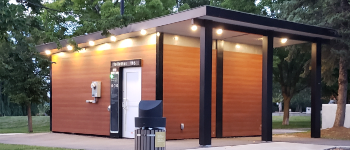What is Interactive and Multi-Sensory Play and Why You Need It On Your Playground
Apr 13







Apr 28
Sensory play is play that activates and engages the five senses (touch, sight, hearing, smell and taste) and is a fantastic tool for inclusive experiences. Not only is sensory play exciting and fun—it’s rooted in neuroscience and supports how children process and respond to the world around them. Through engaging in sensory play, children build nerve connections in the pathways of their brain. This lends to the development of language and motor skills. The overarching benefits of sensory play include cognitive growth, fostering social interactions, and encouraging kids to explore and experiment. Sensory play also provides an important space for emotional regulation. What does this mean for playgrounds, and how do we incorporate sensory play? Let’s dive in!
As we briefly highlighted, there are several developmental benefits to sensory play, backed by research:
Sensory play helps all children, but it especially benefits those with sensory processing disorders or developmental differences. Children with sensory processing disorders often exhibit symptoms of difficulty integrating information from their senses, which may overwhelm them and result in confusing behavior. Sensory play provides a safe space for all children to explore, discover and define their needs, and learn how to regulate their responses.
For more information, we recommend the CDC’s child development milestones checklist – click here to access.
There are a wealth of sensory-rich elements that can be incorporated into playground designs!
Whether you’re planning a big new playground or want to add a few new elements to an existing space, there are a plethora of ways to include sensory play! A good place to start is to think about a mix of sensory modalities – you may want to include a Sensory Wave Climber at the playground with a tactile panel, an auditory panel, and a visual panel to provide a breadth of experiences. Another great way to include sensory elements is to consider the natural features of the space around the playground. Is there a water nearby, like a creek or a beach? It might be a good idea to place free-standing play events near the water! Finally, a fantastic way to provide a sensory experience on a budget is to implement a garden. This provides a quiet zone and give your community the opportunity to get their hands in the soil together.
If you’re feeling lost, we’re here to help! At MRC Recreation, we specialize in creating unique and research-backed inclusive play experiences, and sensory play is at the forefront. With our partners at GameTime, we have a wide range of options for sensory play experiences to ensure accessibility and excitement!
Sensory play isn’t just a trend—it’s a vital part of supporting every child’s development and creating spaces where everyone feels seen, safe, and excited to play. By thoughtfully integrating sensory elements into your next playground project, you’re not just building a park—you’re nurturing curiosity, confidence, and connection. Whether you’re starting from scratch or refreshing an existing space, our team is here to help bring your vision to life.
Reach out today to schedule a consultation or browse inclusive equipment for inspiration.